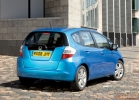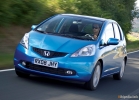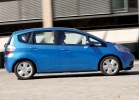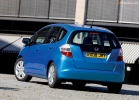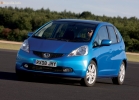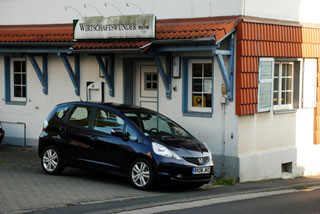Honda Jazz (Fit) test drive since 2008 hatchback
New wave
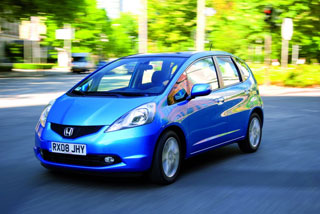 They say that a new wave of jazz appeared in the 60s of the last century, when jazz music was overgrown with adjacent styles swing, fushn, free jazz, Bosanov, and improvisation reached a qualitatively different level. But in the automobile world, this very wave rolls only now, with the advent of the new generation of Honda Jazz.
They say that a new wave of jazz appeared in the 60s of the last century, when jazz music was overgrown with adjacent styles swing, fushn, free jazz, Bosanov, and improvisation reached a qualitatively different level. But in the automobile world, this very wave rolls only now, with the advent of the new generation of Honda Jazz. Jazz has always been considered the music of the elect. Some works were so complex and unpredictable. But at the same time, along with the crazy psychedelic King Crimson and the abstruse avant -garde of Alice Coltrane, many are well aware of such ordinary names as Louis Armstrong, Miles Davis or, say, Frank Zappa. Mainstream? To some extent. Like, for example, the modern Honda Jazz. The mainstream of the previous Jazz, which was sold in an amount of more than two million copies around the world, could not last forever. A fresh stream was required, improvisation was needed. Orchestrandants, in the person of Honda designers and engineers, drove their tools and played a work of a new wave, and we go to Frankfurt to listen to its modern sound.
It must be admitted that finally to classify JAZZ as a segment of the segment in interferes with a number of deviations. And the most obvious of them is strongly gravitating to the uniformity of the body. It is also obvious that of all such classmates, Honda is one of the most pretty. The designer improvisation was not very bold, but clearly verified. It seems that JAZZ has changed only slightly, but the previous generation was replaced by a kind of sharpness and seriousness, emphasized by the front part in the Civic style. The machine has matured. The body only slightly increased in length and width. A little (50 mm) a wheelbase has grown. But the main rhythm - the Cab Forward layout with a gas tank under the front seats - remained unchanged. This is natural, because it is thanks to her that Jazz turns out to be so spacious inside, for which he is not least loved by many.
Interior also tried. Remember the solid melody of old jazz, which was based on the original and very convenient Magicseats system? So, it was overlapped capitalized. The front panel used to look very unusual, and now at all: with a clear bias in the vanguard and looks like Civic, and the steering wheel is one-in-one. The riot of textures does not bother, each material seems to play its own party and does it efficiently. Additional containers and niches for storing things appeared.
Jazz is the leader of his class in the reserve of internal space. Awesome scope, especially behind. You can fold the second row in one movement, and then in a huge trunk you can really transport the tools of the whole jazz-band. Even a double bass. For the sake of such an abundance of free space, it is quite possible to come to terms with the vertical minivan landing. Although the driver feels comfortable with an original textile upholstery, he holds well in vihi, and a three -spoke steering wheel with a drowned hub is asked. When turning the ignition key, the numbers in the wells of the tidy flashed red red. The baby, apparently, wants us to check in the case of her new 100-horsepower i-VTEC engine.
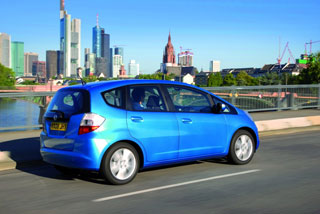 The musicians from the Honda engine engine played their former 1.4-liter topic in a completely new way. The main changes were the addition to the orchestra of another camshaft, eight valves and the I-VTEC party. Received + 17 hp. And more torque in the medium -speed zone. In practice, the motor remained as funny and steep (maximum speed for 6500), but it is much better. Well, as it happened, while the motor is cleaner and more economical.
The musicians from the Honda engine engine played their former 1.4-liter topic in a completely new way. The main changes were the addition to the orchestra of another camshaft, eight valves and the I-VTEC party. Received + 17 hp. And more torque in the medium -speed zone. In practice, the motor remained as funny and steep (maximum speed for 6500), but it is much better. Well, as it happened, while the motor is cleaner and more economical. Putting economy is also the merit of a new gearbox in the Jazz format, which replaced the impeccable variator is a robotic 6-speed I-SHIFT. Instead of the inconspicuous operation of the variator, now you will have to get used to the twitch, jerking and inhibition when moving down. Of course there is a manual mode. There are even steering petals. But they are unable to replace the variator. Maybe it was not worth it to refuse him? And the Japanese did not refuse. The Japanese version of Jazz is equipped with them. Has the Honda transmissive engineers have not grown even before jazz improvisations? Not certainly in that way. They recouped on the mechanics!
The switching mechanism is close to the ideal, with the most accurate and short moves. JAZZ handling of past generation sounded good, and most importantly, reliably and predictably. Only the steering mechanism was dissonated. With his viscosity and low sensitivity, he spoiled the overall impression of the ensemble. This time it sounds in unison with an elastic suspension, which was slightly finalized, which is noticeable both on a straight line (the new Jazz tolerates high speeds) and on turns. You know, it’s even unusual for a mild to put this family aquarium on the arc. But it is evident that the pendants wanted to convey to their music - jazz with elements of sambo and Latino. Not to say that Jazz has become a professional dancer, but a couple of temperamental driver will be able to create.
A new wave of jazz, having already swept through his native Japan, according to the forecasts of music analysts, should reach Russia simultaneously with Europe, which means in February-March this year. All these exercises, of course, will not produce such a splash as the first Jazz, but will certainly bring music from Honda to a higher level. This is the case when improvisation is quite successful. So much so that it begins to swell again by the mainstream
NOTE
Engine
It would be more honest to call the Jazz 1.3 liter motor, because its volume is 1339 cm, but the Hondians like 1.4 more. Compared to the eight-valve I-DSI of the past generation, the volume has remained the same, but now it is a 16-valve engine with the I-VTEC gas distribution phase system that develops 100 hp. at 6000 rpm and 127 nm for 4800 rpm. In addition to the use of i-VTEC technology in the engine, the forms of combustion chambers were changed, cooling was improved, friction in the piston valve-piston group was reduced, an intake manifold with a resonator was used, and the air resistance at the input and output was reduced. To improve environmental indicators, the exhaust manifold is made as one with the head of the cylinders block, and the air flow sensor at the input, a linear air flow sensor installed in front of a closed catalytic neutralizer, and an oxygen sensor located in front of the rear catalytic neutralizer are installed.
Gearboxes
Jazz is equipped with either a five -speed mechanics or a six -speed robot. In the mechanical gearbox, gear rates were changed, the adhesion pedal was less, and carbon synchronizers appeared in the 2nd and 3rd gears instead of brass. A SIL (Shift Indicator Light) indicator, which allows optimizing switching, appeared on the panel of cars with a handle.
I-SHIFT automated mechanical transmission is used on JAZZ for the first time (cars with a variator are still produced in Japan). They say that for better efficiency and environmental friendliness. The programs are switched either on their own, in automatic mode, or with the help of a KP lever or steering wheel petals in manual. Models with I-SHIFT are also equipped with HSA (Hill Start Assis) system, which allows you to not roll back when touched to the hill.
Suspension
McPherson front suspension geometry was revised for better handling and maneuverability. The caster was increased from 2.2 to 3.3 degrees, and the stabilization shoulder from 5 to 20 mm to improve stability when moving in a straight line. The rear suspension uses the same compact N-shaped torsion beam, but a slightly changed shape. The length of the longitudinal levers is increased by 39 mm. The track also rushed around. With an increased 55 mm of the car, the radius of the rotation remained the same 4.9 m. Optionally, the JAZZ can be equipped with a VSA course stability system. The steering with an electrical power and brake system with standard ABS were significantly modernized.
The history of the model
For the first time, a model called Honda Jazz appeared in Europe in 1984. It was then produced by Isuzu. A meek, tall, bun-eyed three-door hatchback with a frail 1.2-liter motor (45 56 hp) few people liked it, and in 1986 sales were rolled up. The ancestor of the modern Jazz Honda Fit line, which appeared in Japan in 2001, was replaced by the outdated Logo model and became a kind of response to the Toyota Vitz (Yaris) published in 1999. Fit turned out to be very successful. In the first ten days of sales in Japan, about 23,000 orders were accepted! In Europe, the car began to be sold on January 19, 2002, after the premiere at the Frankfurt Motor Show, under the name Jazz.
For the European market, Honda Jazz installed a slightly different, more rigid suspension. In Germany alone, in 2002, more than 12,000 Honda Jazz cars were sold, and in 2003 more than 10,000, which amounted to more than 1/3 of the total Honda exports. While Fit was equipped in Japan with 1.3 (86 hp) and 1.5 l (110 hp), as well as all -wheel drive, in Europe, the front -wheel drive Jazz was available with 1.2 and 1 motors , 4 l (78 and 83 hp). For a car, a five -speed mechanic or machine gun was offered to choose from. After updating the model in 2005, the variator came to change the automatic transmission, and the rear drum brakes were replaced by disk. In addition, JAZZ has changed a bit and in this form survived to this day (Read more about the last generation of JAZZ in the April Motor issue for 2008).
Dmitry Krotov
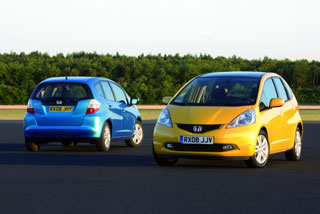

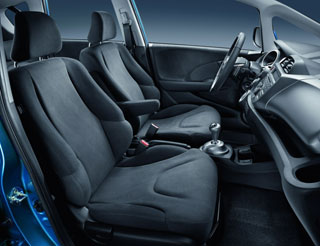
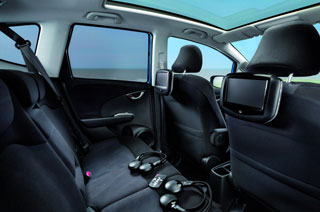
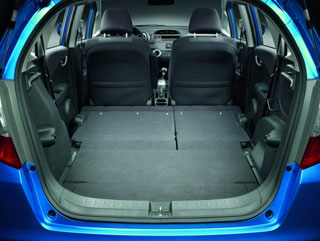
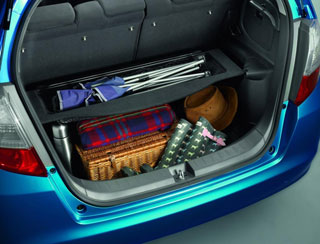
Source: Motor magazine [January 2009]
Honda Jazz (FIT) Video Video since 2008
Honda Jazz (FIT) Krash Test Video since 2008
Honda Jazz (Fit) test drive since 2008
Honda Jazz (Fit) Krash Test since 2008
Krassh Test: Detailed Information78%
Driver and passengers
60%
Pedestrians
79%
Children-passengers
71%
Active security system

